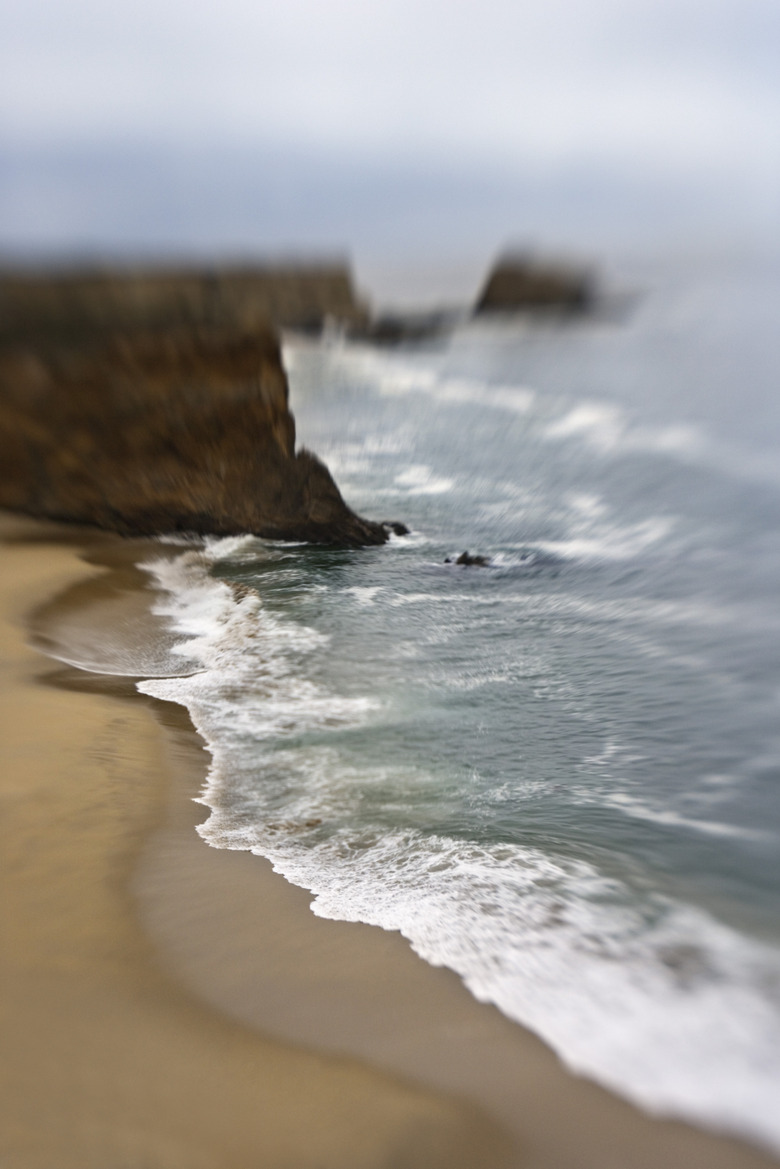How Is The Moon Positioned When There Is A High Tide?
The moon only made things worse when Hurricane Sandy made shore in November of 2012. Tides higher than normal during that time caused storm waters to swell and intensify flooding. In 1687, Isaac Newton told the world how the moon and sun's gravity causes tides to occur. You can predict when high tides occur as well as the moon's position when it helps make those tides happen.
It's Not All Gravity's Fault
It's Not All Gravity's Fault
While gravity is important in influencing the Earth's waters, inertia plays a role in tidal bulge creation. When a point on Earth faces the moon, the gravitational pull between the Earth and moon is the greatest. During this alignment, the moon's gravity pulls the Earth's water towards the moon. Inertia, a force that strives to keep moving objects continuing along a path, fights to counteract the gravitational pull. Because the moon's gravity is stronger than inertia, a bulge effect occurs on the side of the planet facing the moon. A tidal bulge results from these two interactions.
Tidal Frequency and Effects
Tidal Frequency and Effects
If the moon was stationary, one spot on Earth would have a perpetual high tide. Because the moon orbits the planet, high tides occur at any location every 12 hours and 25 minutes. That time period represents half a lunar day — the time it takes for a point on Earth to see the moon overhead again. A lunar day is 24 hours and 50 minutes instead of 24 hours because the Earth rotates in the same direction that the moon orbits. It's not always easy to predict high tide intensity because other factors such as weather, coastline shape and current flow influence tide heights.
The Sun Factor
The Sun Factor
The sun is a very important factor that contributes to high and low tide formation on the planet. For example, unusually low and high tides occur each month when the sun and moon align. Locations experience more moderate neap tides when the moon and sun are at 90 degrees to one another. The National Oceanic and Atmospheric Administration reports that storm surges during storms often coincide with a new or full moon.
Full Moons and Spring Tides
Full Moons and Spring Tides
Full moons have captivated imaginations for centuries. During a full moon when spring tides happen, the sun, moon and Earth are almost aligned. A spring tide gets its name from the fact that tides spring forth when sun, moon and Earth align. Places on Earth experience neap tides seven days after the spring tides occur. This happens because the moon and sun are at right angles in the sky seven days after the spring tide. If you live near water, you'll see moderate neap tides when the first and third quarter moon occurs.
References
- NASA.gov: Hurricane Sandy (Atlantic Ocean)
- Tidesandcurrents.noaa.gov: Education – NOAA Tides & Currents
- National Oceanic and Atmospheric Administration: Tides and Water Levels
- National Oceanic and Atmospheric Administration Oceanexplorer: Multimedia Discovery Missions | Lesson 10 – Tides | Activities- Predicting the Tides
- National Oceanic and Atmospheric Administration: Tides and Water Levels
- National Oceanic and Atmospheric Administration: What Is The Difference Between Storm Surge And Storm Tide?
- National Oceanic and Atmospheric Administration: Why Do We Have Spring Tides In The Fall?
Cite This Article
MLA
Lee, Kevin. "How Is The Moon Positioned When There Is A High Tide?" sciencing.com, https://www.sciencing.com/moon-positioned-there-high-tide-22046/. 24 April 2017.
APA
Lee, Kevin. (2017, April 24). How Is The Moon Positioned When There Is A High Tide?. sciencing.com. Retrieved from https://www.sciencing.com/moon-positioned-there-high-tide-22046/
Chicago
Lee, Kevin. How Is The Moon Positioned When There Is A High Tide? last modified March 24, 2022. https://www.sciencing.com/moon-positioned-there-high-tide-22046/
